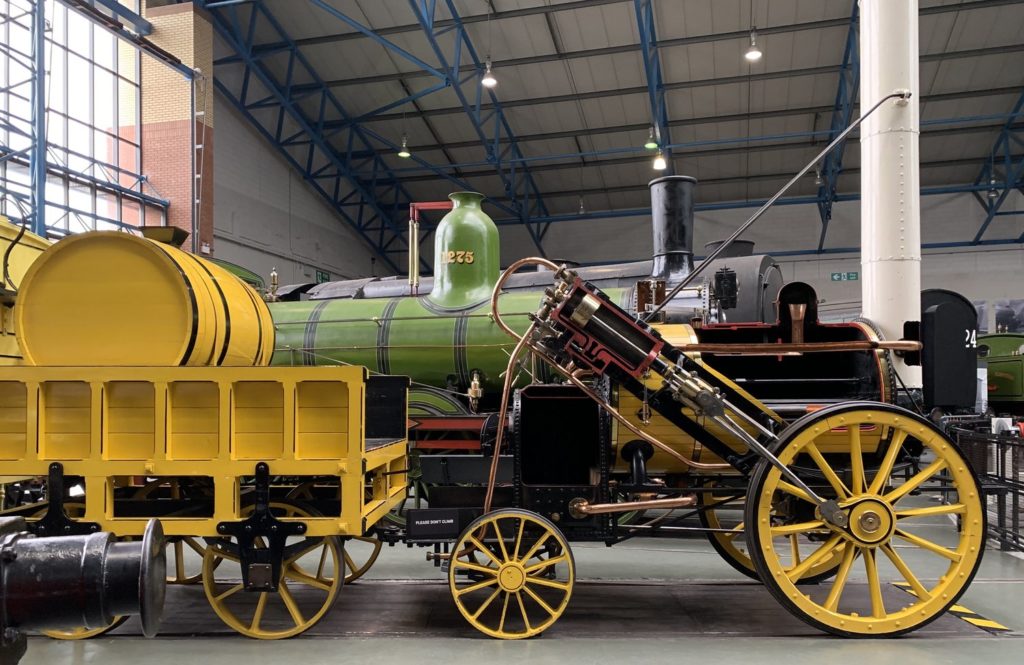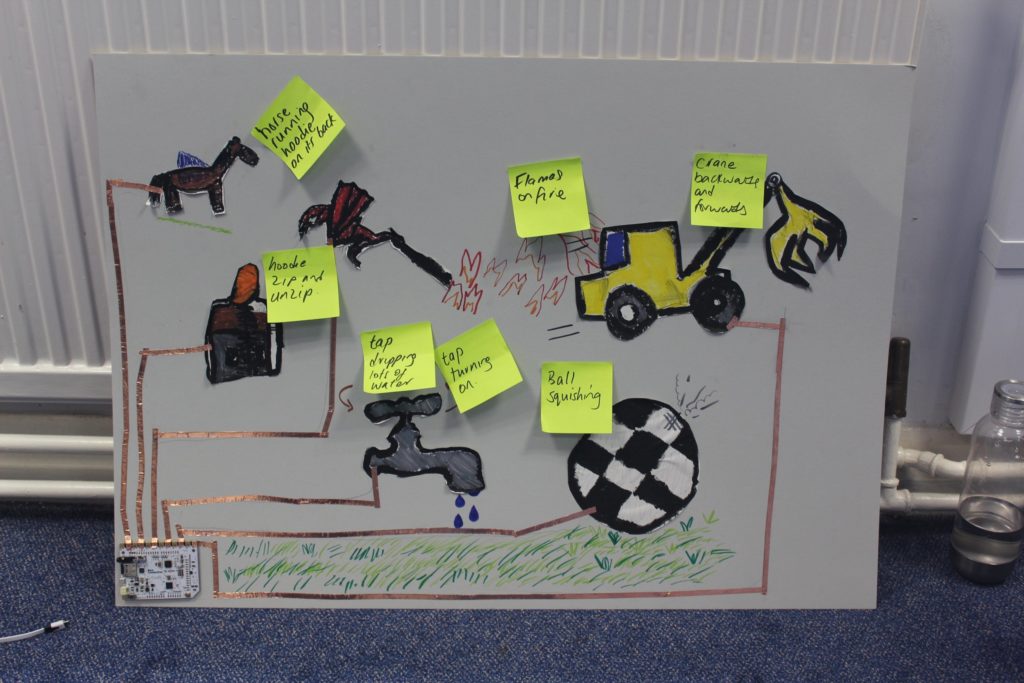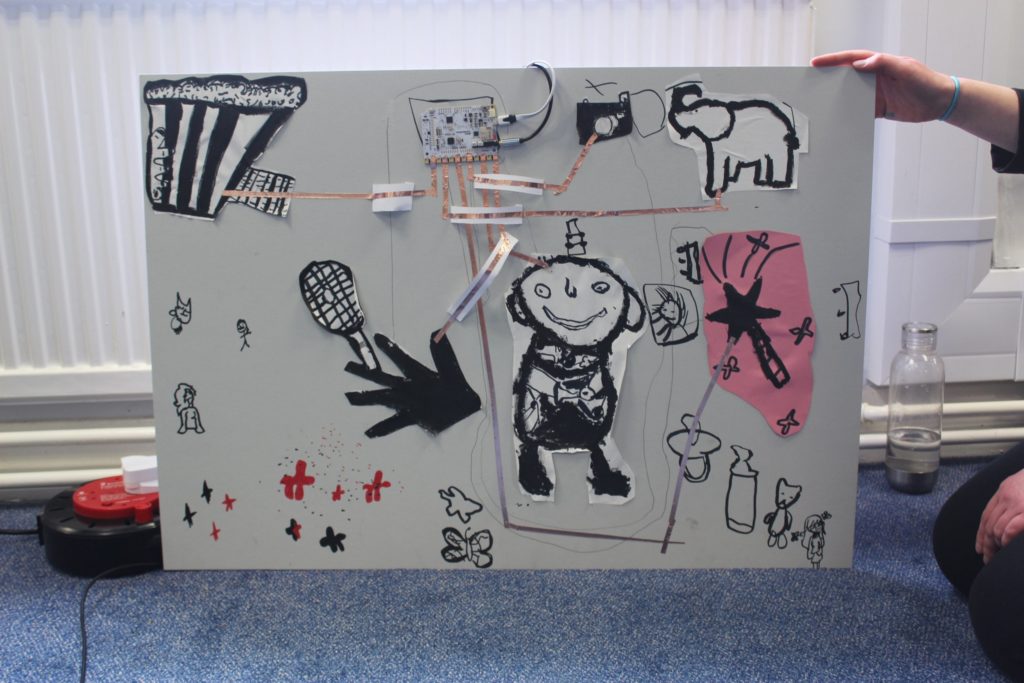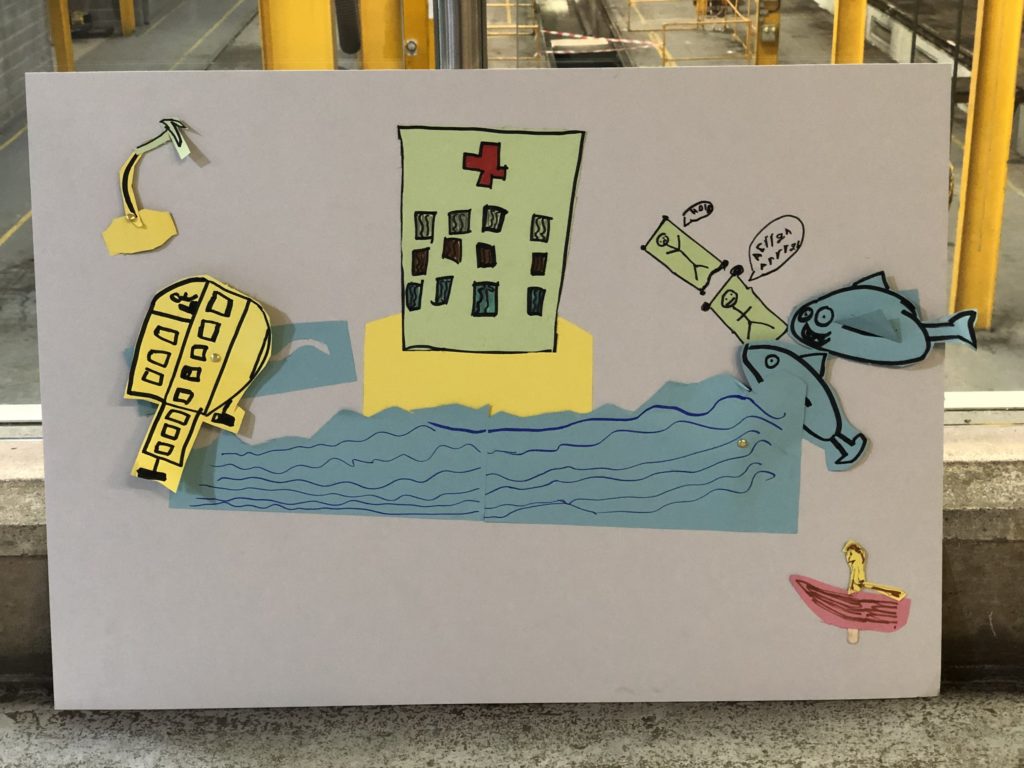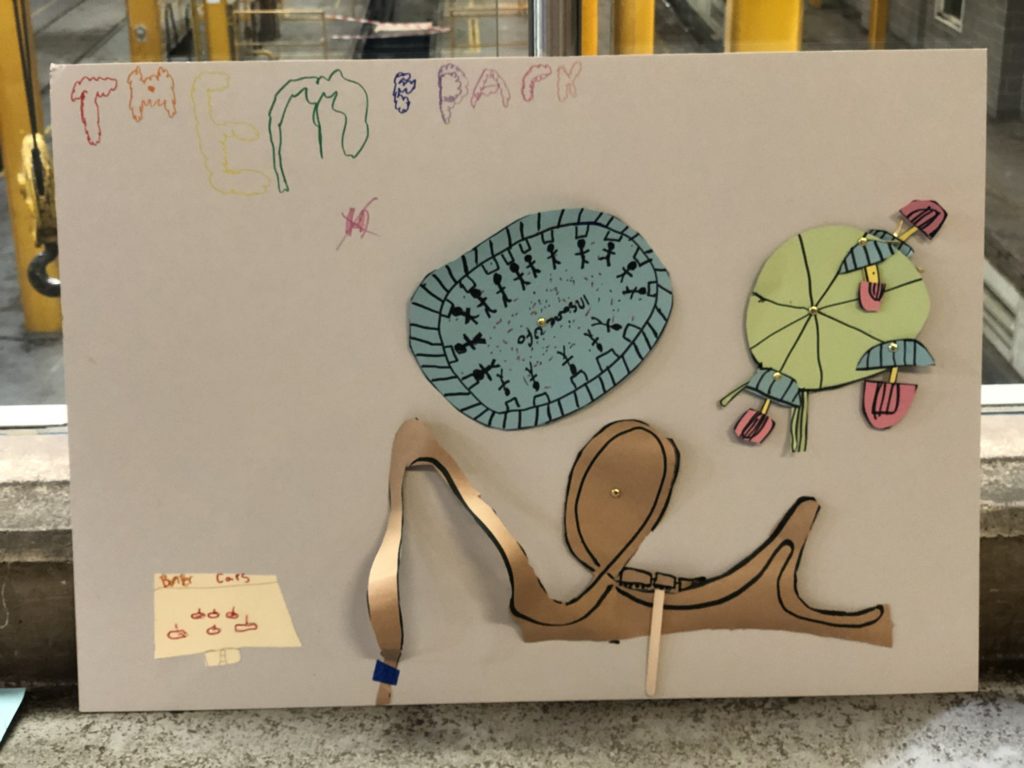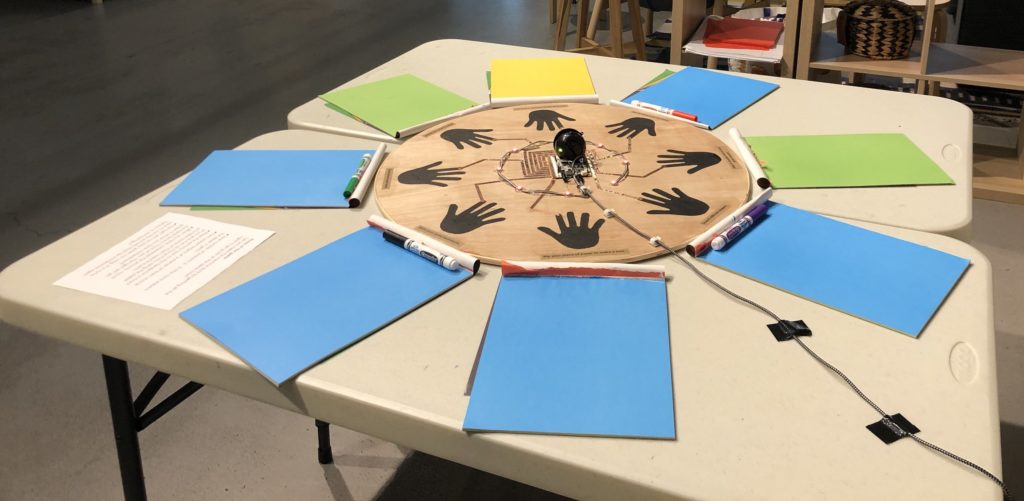We visited the National Railway Museum in York last week, in preparation for an exciting new gallery which will be opening in 2023—Wonderlab: The Bramall Gallery. Stand + Stare will be creating a Conductive Wall for Wonderlab and so we wanted to check out the space, gather ideas and meet some very special project partners. We’ve also begun prototyping!
Wonderlab will be built on the site of the existing engineering workshop at the National Railway Museum, which means elements of the track pits, crane and industrial infrastructure will be present in the new gallery. The architects, De Matos Ryan, are keen to retain the industrial feel in a forward-thinking, creative and interactive space that will capture the imaginations of a new generation of engineers-in-the-making.
At eight metres long and 3.5 metres high, Conductive Wall will be an eye-catching exhibit, aimed at family audiences with children aged 7–14. Conductive Wall will use capacitive sensors that invite visitors to interact with images and animations that are projected onto the wall. By touching conductive touch points, visitors will be able to ‘play’ the wall—solving problems, triggering animations and sounds or uncovering hidden elements by working together simultaneously.
While visiting York we met with young people from a local charity called The Island, to see how they like playing with capacitive sensors and what ideas they might have for the narrative aspects of our Conductive Wall. We took along some Bare Conductive kits and led them through two days of workshops where they made their own scaled-down Conductive Walls with copper tape and electric paint, triggering home-made sound effects and collaging ideas for animations.
We are currently working on a rigorous development programme that involves prototyping, audience testing and research analysis. For the first phase of this, we have been testing the game-play aspects of Conductive Wall, to see what sort of signals and cues visitors will need to understand how to use the wall and work together to unlock less obvious aspects of it.
Employing our signature melange of physical and digital, we set up some good old analogue games with Bare Conductive touch points triggering sounds and lights to indicate how players are doing in the game.
Wonderlab at the National Railway Museum, part of the Science Museum Group, will encourage people from all walks of life to ‘think like engineers’ by figuring out how to make things and how to make them work better. This chimes well for Stand + Stare as we are often involved in innovative creative technology projects and we love experimenting and prototyping new ideas. For Wonderlab, we are embodying these engineering principles in our exhibit development, using the findings from Prototype 1 in conjunction with what we learned from the young people’s workshops to progress our designs for Conductive Wall.
The next stage will be to firm up the narrative content, create a design brief for the appointed illustrator and build a scaled-down version of the wall for further testing.
This blog post was originally published on the Stand + Stare website.

